|
"Copyright © Vintagepopupbooks.com. All rights reserved. This content may be cited with proper attribution to Vintagepopupbooks.com and a link back to the original source. Fun and educational article - for non-commercial purposes only, not a description of a particular book for sale.
This essay by vintagepopupbooks.com is licensed under a Creative CommonsAttribution-NoDerivs 3.0 Unported License. Based on a work at vintagepopupbooks.com.(You may use any information on this site as long as it references vintagepopupbooks.com as the source and includes a link to the same.)
A Fun History of Andy Warhol’s Index Book:
(Parental discretion advised) (Updated April 20, 2023)
"Don't just buy a book... take a happening home with you! The Andy Warhol Index Book is alive and kicking. It's a happening in a book... beautiful, groovy, fantastic... full of pop-ups, stickers, photographs, even a foldout poster. But it's more than that... it's a book by Andy Warhol about Andy Warhol... the man who made pop art."
One of the Christmas Season ads from 1967.
The Index Book was sold during the 1967 holiday season as a "hip gift book" and “a children’s book for hipsters”. It was available in both a Hardback and a Softback ($ 12.95) - The hardback Index Book was published in 1967 by Random House, with a first edition of 5,000 copies (source: Gagosian Gallery New York & London. 1986-2016), and a signed boxed edition of 2,500 copies ($50.00). Both editions have the same interiors. Andy Warhol also personally signed and numbered 365 limited hardback editions and initialed numerous elements inside. (See in the Warhol Index Book collection on vintagepopupbooks.com) Note that the first 50 copies of the limited signed edition were issued in a black slipcase. The books measured 11-1/4 x 8-5/8 inches (28.6 x 21.9 cm) (overall). The pages contained 39 offset lithographs and 10 special "elements" such as pop-ups, tear offs, and mini records.
Published by Random House, The Andy Warhol Index Book, is an important Warhol book and iconic publication of the psychedelic era in New York. It was a pioneering example of an artist's book that played with the form and content in a way that was characteristic of Warhol's approach to art.
It was all about “The Factory”, Andy Warhol`s famous (and some say hedonistic) New York City studio where he used to work and shoot his underground films. The Factory was his original New York City studio from 1963 to 1968, although his later studios were known as The Factory as well. Andy Warhol (1928 - 1987) was an American artist, filmmaker, and leader of the pop art movement in the 1960s. A true icon of the 1960s counterculture, He was deeply involved in the book's production process.
Photo of 1967 postcard / advertisement for Andy Warhol’s index book credited to Simmonm1965 ‘s photostream via flickr
"It's a book by Andy Warhol about Andy Warhol... the man who made pop art."
(Source: The Village Voice, November 23, 1967)
In 1966, Alan Rinzler brought an idea to Christopher Cerf at Random House who then commissioned Andy Warhol (1928-1987) to create a book. It would be his first mass-produced book. Warhol tasked Billy Name (born William George Linich, 1940–2016) to design his interactive "Index Book" with help from Gerard Joseph Malanga (born March 20, 1943). While Billy Name did play a significant role in the creation and production of The Andy Warhol Index Book, he was not the main producer of the book. The book was produced by Andy Warhol himself and his associates, including Alan Rinzler, Christopher Cerf, and Random House designer David Paul. Billy Name took many of the photographs featured in the book. He was also involved in the book's production process, including the creation of the pop-up pages and other interactive features. Gerard Malanga worked on the Index Book as well, providing photographs and assisting with the design and layout of the book. He also contributed to the text, including the interviews with Factory regulars and the essay about the Velvet Underground. However, the exact extent of his contributions is not clear, as there have been conflicting accounts over the years.
Some called it a pop-up book for hipsters. The Index Book was a mix of interviews, photographs, pop-ups, and other interactive elements that celebrated the Factory and the people associated with it. It was not a critical study of Warhol or his work, but rather a playful and colorful tribute to his unique artistic community. Most of the photographs in the book were taken by are by Name along with additional photographs by Nat Finkelstein and Stephen Shore. "The Index Book" was considered a groundbreaking work of art and a significant contribution to the cultural scene of the 1960s. It became a must-have for collectors and anyone interested in the pop art movement, as well as a cultural touchstone for subsequent generations. The book's multimedia approach, combining interviews, pop-ups, photographs, and art inserts, broke new ground in publishing and established a new standard for art books.
The Abstracted front cover was produced from a negative printed in silver and black from a photograph by Billy. It includes Warhol sitting on top of a ladder holding Nico’s son, Ari Delon. In the background are Brillo Box images on the left (a well-known subject in Warhol's artwork). Standing below Andy you see Gerard Malanga holding a whip, Mary Woronov, and various Velvet Underground members including Lou Reed in his dark glasses. Nico is popping a peace sign. The back cover image is a close-up of Warhol's face, with his trademark shock of white hair and his slightly quizzical expression.
.jpg) 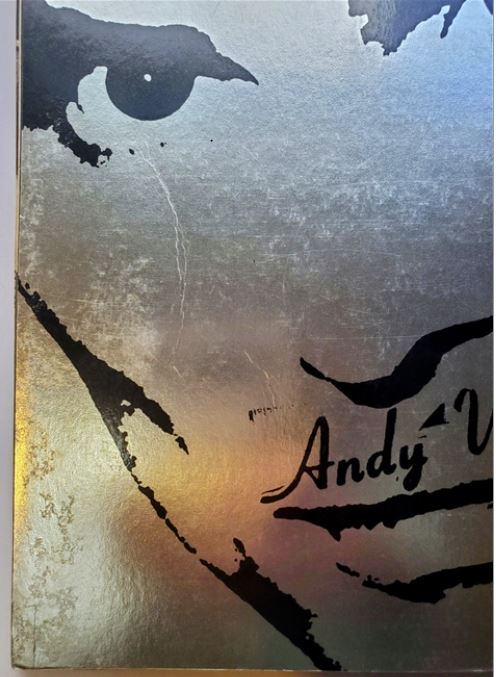 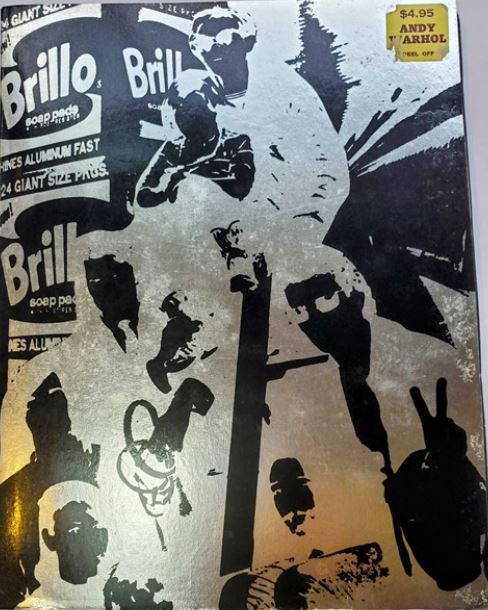
Photograph of Andy Warhol in Moderna Museet, Stockholm 1968, before the opening of his retrospective exhibition. Brillo boxes in the background.
Image 1 from : Lasse Olsson / Pressens bild, Public domain, via Wikimedia Commons
Image 2: Back Cover Andy warhol Index Book, Image 3 - Front Cover Andy Warhol Index Book
"The Andy Warhol Index Book, Limited Edition, is an extraordinary book-object, a box with a lid containing a factory-full of Warholiana: pop-ups, stickers, photographs, even a fold-out poster. The limited edition includes a signed and numbered silkscreen of a tomato soup can. Only 2500 copies are being printed, so buy now for Christmas giving!"
(the New York Times on December 7, 1967)
Index was sold during the 1967 holiday season as a "hip gift book". It was available in both a Hardback ($ 12.95) -The hardback Index Book was published in 1967 by Random House, with a first edition of 5,000 copies (source: Gagosian Gallery New York & London. 1986-2016), and a signed boxed edition of 2,500 copies ($50.00). Both editions have the same interiors.
According to the Gagosian Gallery, the softcover edition of "The Index Book" was published in 1968 (source: Gagosian Gallery). This information can be found on their website on the page dedicated to the 2010 exhibition "Gagosian Pop-Up! New York in the 60s" Additionally, a review of the book in the December 15, 1967 issue of the New York Times states that the book was set to be published in both a limited edition hardcover version and a softcover version in 1968. Note that Softcover editions pub boxes state "First Printing" but do not include a publication date.
Note: The only editions that Vintage Pop-op Books has identified are three editions. A hardback edition of 2,500 copies), a Limited edition of the Hardback book signed by Warhol (365 copies) and the softcover book.
"A new kind of book. A book of the sixties"(Advertisement in the New York Times, December 3, 1967)
The hologram cover of the hardback edition of "The Index Book" was created by Warhol in collaboration with the artist and inventor Billy Klüver. It has a three-dimensional Rowlux and screenprinted cover which features a repeating pattern of the word "Index" in various sizes and orientations This creates a dynamic visual effect that gives a sense of movement and depth.
The books were originally sold in a clear plastic bag with purple lettering, printed diagonally across the bag are the words Andy Warhol's INDEX (BOOK) - also printed in purple- across the top - were the words "...Warhol's bag is the neatly packaged, Saran-wrap society" - Richard Goldstein. (The quote refers to the way in which Warhol's art and aesthetic are often characterized by its clean, mass-produced appearance, much like food items that are wrapped in Saran wrap. Goldstein's statement suggests that Warhol's work is a reflection of the consumerist culture of the time, but also represents a new way of seeing and experiencing art.
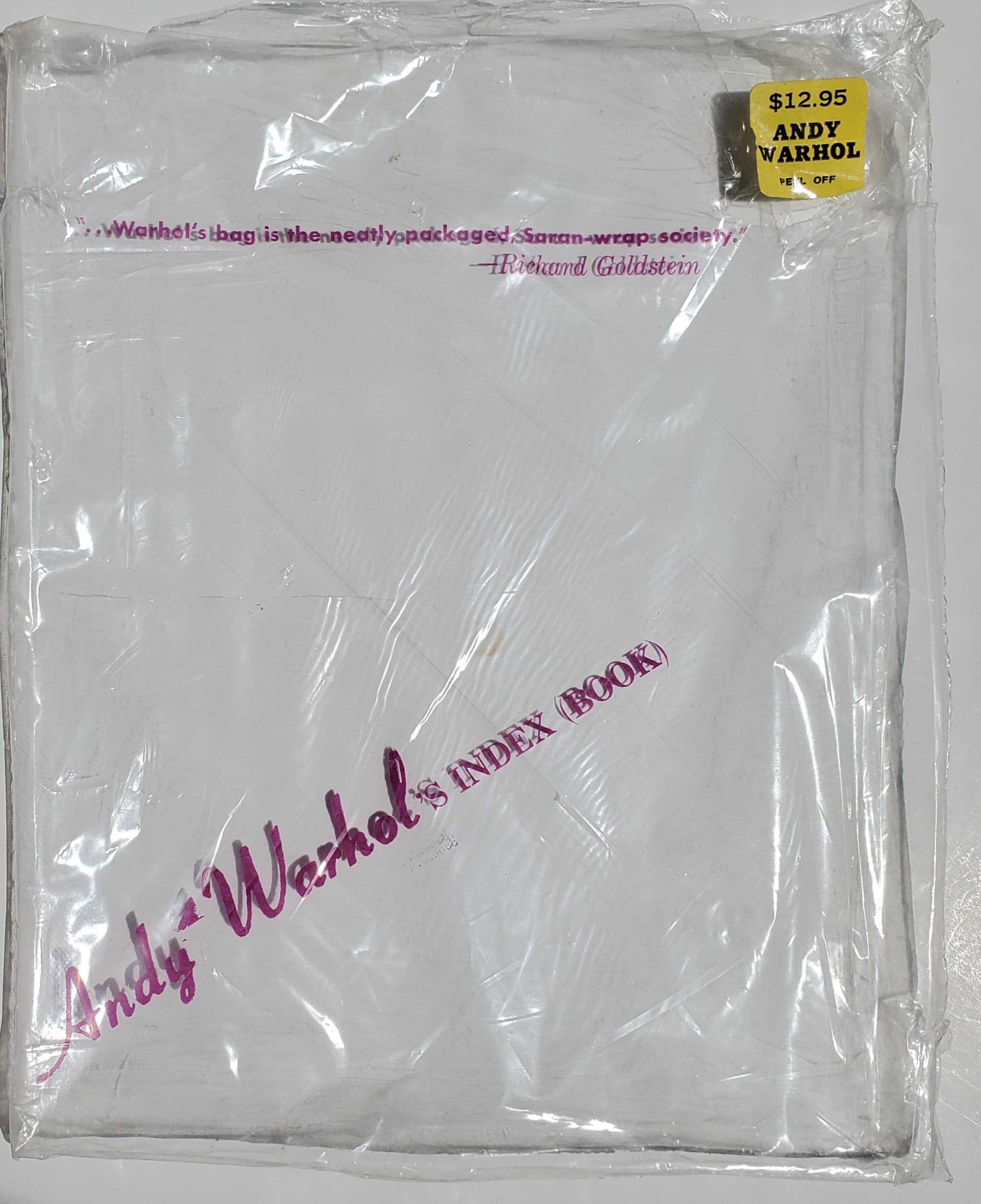 All digital rights reserved, photos may be used as long as vintagepopupbooks.com is credited along with a link All digital rights reserved, photos may be used as long as vintagepopupbooks.com is credited along with a link
When new, the books also had at least a couple of pieces of transparent paper laid in to protect some of the elements. See below for an image of this original paper within our mint copy protecting the water tabs:
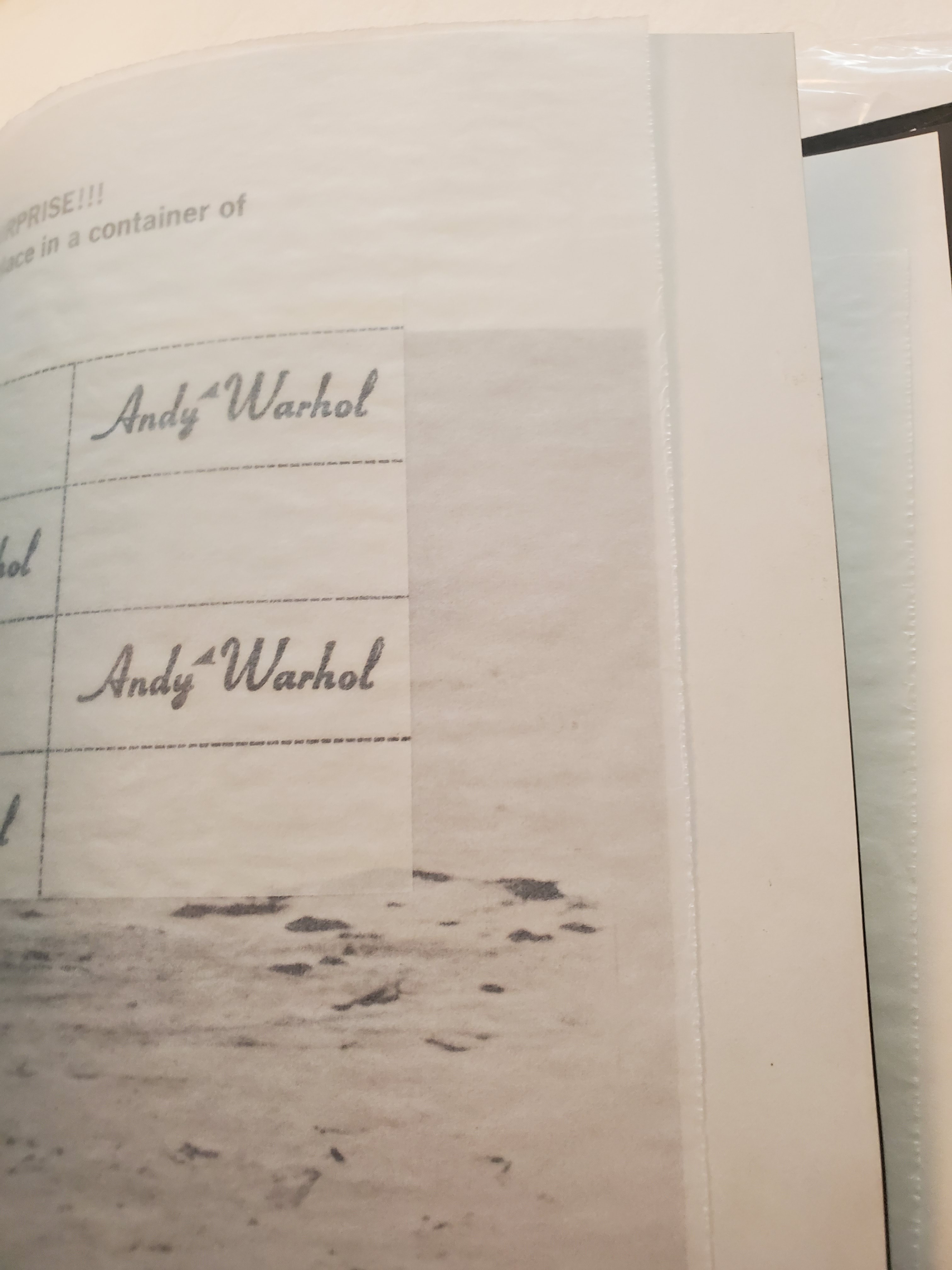
Index Book was a book cited by both Andrew Roth and Martin Parr as among the most influential photo/artists' books of the century. (Andrew Roth’s The Book of 101 Books: Seminal Photographic Books of the Twentieth Century (2001) and Martin Parr & Gerry Badger’s three volumes of The Photobook: a history (2004).)
In the original advertisement (pictured above), the “strange” rainbow nose was promoted as “a do-it-yourself nose job.” According to Billy Name the nose was Bob Dylan's. The squeak that one hears on the accordion page was supposed to depict/sound like a fart. This was in keeping with his fascination with bodily functions and bodily humor, which was a recurring theme in Warhol's work. However, In his ads, Warhol referred to it as a "Bronx cheer maker," which could suggest that it was also meant to produce the sound of a raspberry or Bronx cheer (a vocalization indicating derision or contempt).
The tear-off papers that some think were for dropping acid were actually designed to drop into the water. Once in the water they dissolve and the name Andy Warhol floats to the top via a small square of paper. Some have suggested that the castle design may have been based on a promotional item produced by the Hallmark company for the release of the 1967 film "Robin Hood." However, there is no definitive evidence to support this claim, and it remains a matter of speculation. The biplane came from one of Graphic International's promo pieces. Much of the text/design was based on inside jokes between Warhol and his friends. Warhol continued to add little details and make changes to the book up until the last minute, which added to the spontaneity and improvisational feel of the project.
How it all began - In the spring of 1967, The Legendary editor Alan Rinzler ( (Bantam Books, Grove Press – later vice president of Rolling Stone Magazine & Straight Arrow books) went to the Random House offices with the concept of a book about Andy Warhol and his friends. Nervously, Christopher Cerf ( An editor at Random House) agreed to the book, and Rinzler, Cerf, and Random House designer David Paul headed for Warhol's studio, called The Factory, to discuss materials and ideas. Alan took it to Andy with the notion that the book would also be a work of art. Andy liked the idea and agreed to be the author. Later, Warhol went to the Random House offices, where he happened to see several of the Random House Pop-up Experiments. "Those are nice," said Andy. Right then and there he decided to add pop-ups to the book. Rinzler was the editor for Andy Warhol’s Index Book. On his website, he talks about the “very collaborative creative process” of the book stating that “As editor, my job was to create appropriate artistic elements that were consistent with Andy’s repertoire of pop art and mixed media to include in the book..” Alan goes on to say that the two editions in cloth and paper were done simultaneously and sold out quickly. They used a particular printer in Japan that was “able to execute just about every crazy idea that we had”. (Note: Japan at the time was known for high-quality printing of photographic books) It had taken 3 dummies before Warhol was satisfied and the book was ready for production in Japan. Warhol struggled with the finishing touches, including the nose (for which Christopher Cerf copied over 1,000 noses before the artist was happy). As the book was on press, Warhol was still adding details. One thing he kept – the crossed out the names in front – Warhol loved mistakes. (Although according to Warhol stars.org, In 1992 Gerard Malanga said that “Billy Name confessed that "out of jealousy" he had crossed out Malanga's name from the photo-ready mechanical for the book while Gerard was living in Rome. Previously, Malanga had always assumed that Andy had excised his credit from the book.”) Finally, it was printed in Japan, and after a frightening few days when the ship carrying Andy Warhol's Index Book was battered by a Pacific typhoon, copies of the book finally arrived at the Random House warehouse in November of 1967. (Courtesy, Random House, ca. 1967-68)
Once the books arrived Bennett Cerf with Random House hosted a big party for Andy to celebrate the book on December 14, 1967 . Rock N Roll music was played and lots of liquor and little sandwiches were served. It was a very large party (From The Village Voice Dec 21, 1967 "Andy Warhols Book Party, Put-on, Pop-out, Blow-up")Many famous people were invited including Barbara Walters, Truman Capote, Norman Mailer, and others from the entertainment and publishing industries. The book party for "Index Book" was a star-studded event that attracted many luminaries from the worlds of art, literature, and entertainment. In addition to the guests mentioned earlier, other attendees included Edie Sedgwick, Viva, Peter Beard, and members of Warhol's entourage, known as the Factory "superstars". The event was held at the Factory, which was located in a loft building on East 47th Street in New York City. The space was decorated in Warhol's signature style, with walls covered in silver foil and mylar balloons floating throughout the room. According to some accounts, the party was chaotic and frenzied, with guests wandering through the space, admiring the art and socializing with each other. Warhol himself was said to be a somewhat distant and enigmatic figure, presiding over the festivities from a corner of the room. Some guests were reportedly put off by the strange and unsettling atmosphere of the event, while others found it thrilling and exhilarating.
Image: Front Cover of THE VILLAGE VOICE, Greenwich Village, New York, Dec. 21, 1967
( Photo of original newspaper held in the vintagepopupbooks.com Andy Warhol collection)
available here : https://www.vintagepopupbooks.com/Andy-Warhol-Index-Book-signed-limited-edition-p/m-202w.htm
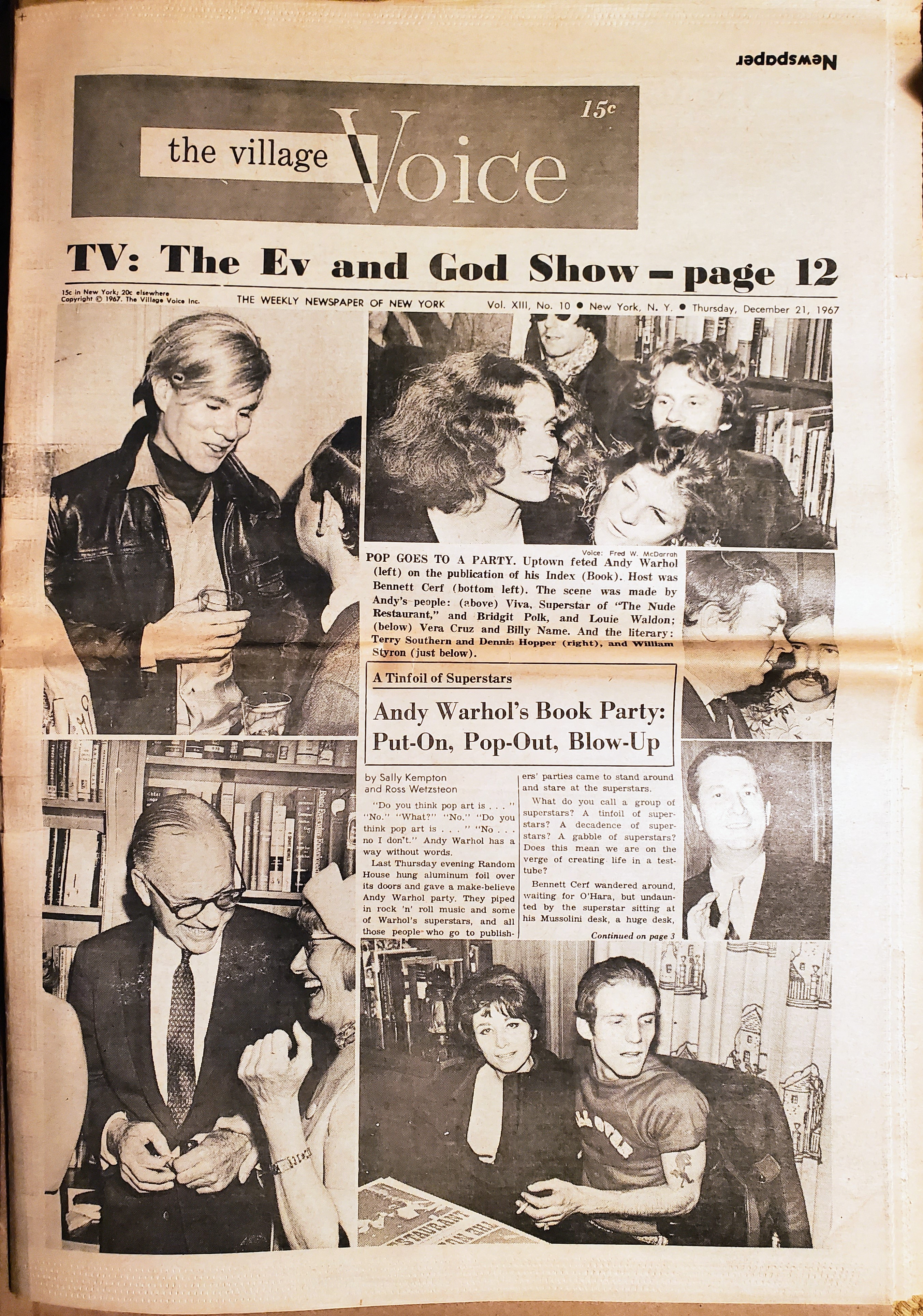
Interestingly, Rinzler says that when they were doing the interview with German singer Nico, who was a frequent visitor to the Factory and a member of the Velvet Underground. (which was put onto the little plastic floppy record), he and Andy were listing to the Beatle's Sergeant Pepper for the first time. Rinzler also described the factory at the time with its high vaulted ceilings, canvases hanging around, lots of people silk screening and rolling prints, photographers, and people standing around like Lou Reed in his dark shades, the blond German model.Here are some of the gimmicks that are stuffed in a high-spirited and cleverly designed package... a silver balloon that inflates...
(source: Los Angeles Times, 1967)
About the speculation that the “balloon” in the books was really a condom - The rubber rumor has been disproven. The actual balloon was originally silver with “INDEX” printed on it in neon pink. Since the actual editor, Rinzler, refers to it as a “silver balloon” – we know that it was indeed a silver balloon. It’s unlikely that many collectors still have the balloon intact since it would have disintegrated in most all books after 40+ years. However, a while back we did find someone with a copy that still had the balloon intact, as it had been preserved in saran wrap. Judging from photos of that copy, it was indeed a balloon shape, not a condom shape. We can also see the traces of silver left, not yet degraded to brown. Sometimes people assume that traces of brown they are seeing meant the balloon was gold, it was not - it was silver. See photo below. Also - Warhol would often bring in silver balloons to drift around the ceiling of the Factory, so it would make sense that his Index Book about the factory would include a silver balloon. According to “The Great Seduction by Andy Warhol” Blog, “The silver represented the decadence of the (factory) scene, as well as the proto-glam of the early seventies. By combining the industrial structure of the unfurnished studio with the glitter of silver and what it represented, Warhol was commenting on American values, as he often did in his art. The years spent at the Factory were known as the Silver Era, not solely because of the design, but because of the decadent and carefree lifestyle full of money, parties, drugs and fame.”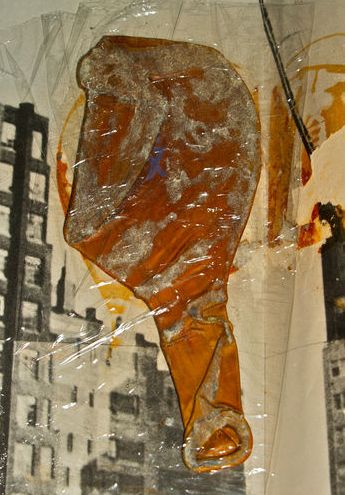
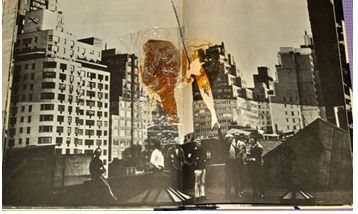 Figure 1: A rare glimpse of the Andy Warhol Index book silver balloon.
Used with permission from the photographer.
All digital rights reserved, photos may be used as long as vintagepopupbooks.com is credited along with a link.
Vintagepopupbooks.com has another copy in our collection where the balloon can be seen due to similar preservation.
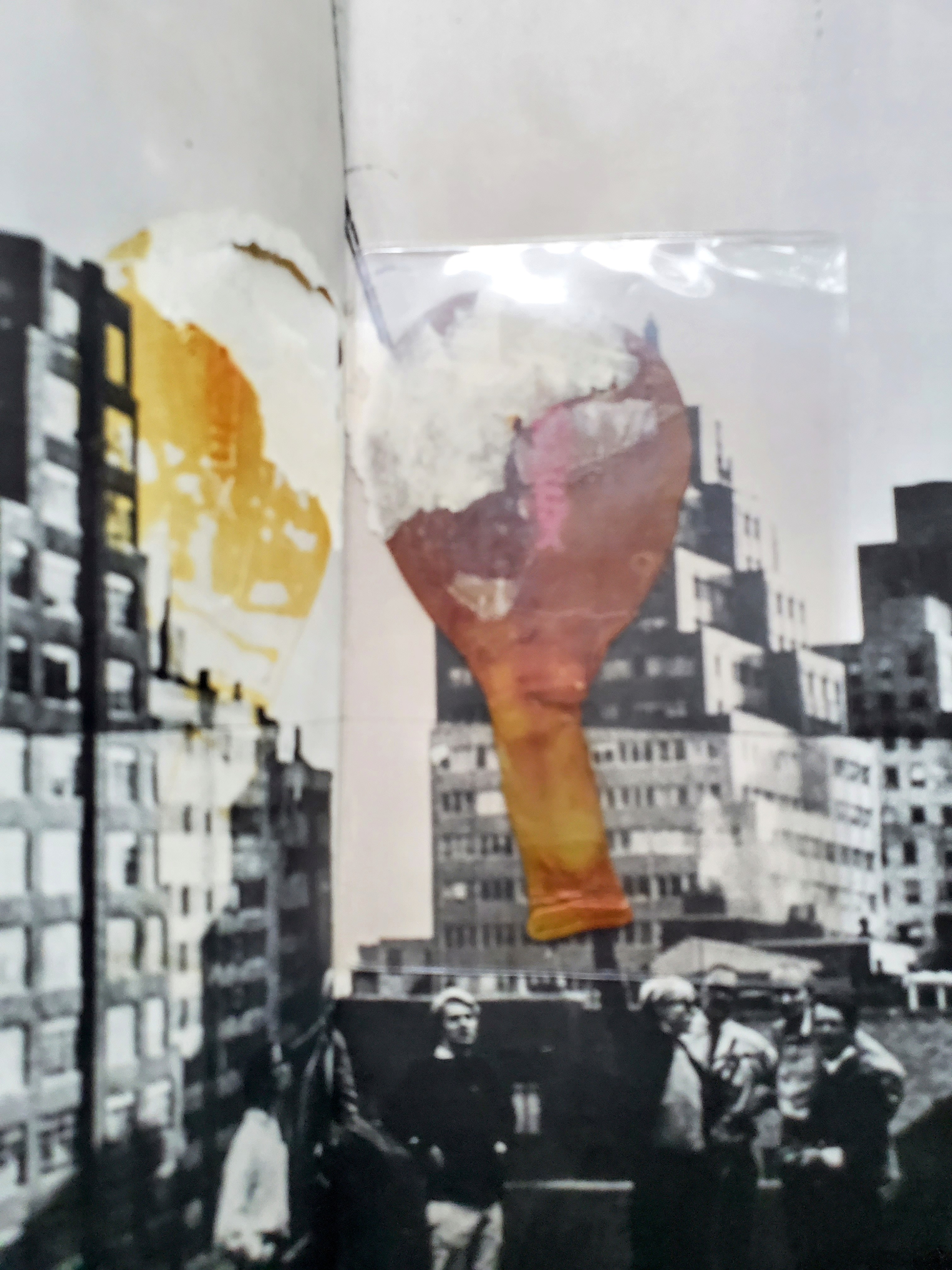
Photo by Vintagepopupbooks.com All digital rights reserved, photos may be used as long as vintagepopupbooks.com is credited along with a link.
The photo above comes from our unstuck balloon copy. Because the pages are not stuck together as is almost always the case, one can see the entire spread image.
Due to the show-through on the back of the balloon page on our copy, we learned that the balloon also had a word written on it. The letters were " INDEX" but they are hard to read (see photo).
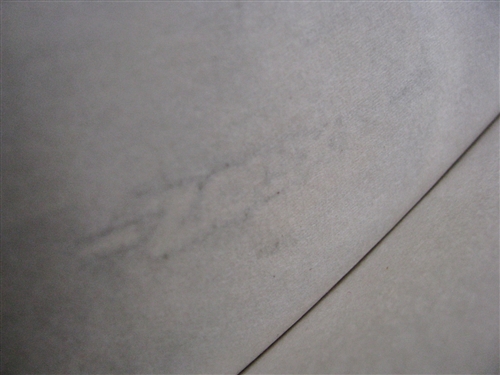 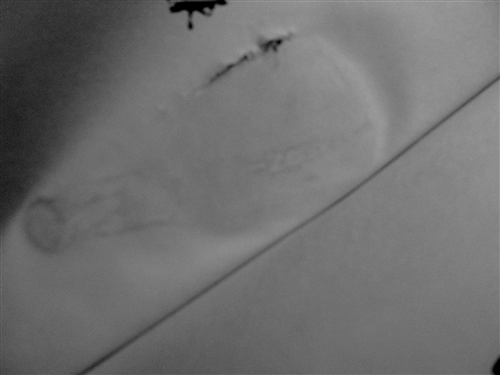
The image above shows that the letters on the balloon were: INDEXPhoto by Vintagepopupbooks.com All digital rights reserved, photos may be used as long as vintagepopupbooks.com is credited along with a link.
In the book, I'll Be Your Mirror: The Selected Andy Warhol Interviews 1962-1987 there is some great information about this book. The flexi disc (that is usually missing from the book these days) was made from tape recordings that Warhol made of Nico speaking with poet Rene Ricard. The text itself has three interviews, chosen because the producer, Billy Name needed some “fill” between the novelties. 1: A high School student named Joseph Freeman in Brooklyn interviewed Warhol for his student newspaper. (Joseph would later go on the be Andy’s assistant at the factory) 2: A German reporter interviewed Warhol at The Factory, and 3: Warhol talking about his film Chelsea Girls. None of the interviews were done for the book. They were prior interviews.
"A book as bizarre and fantastic as the Factory itself!"
(Another Christmas Season ad from 1967.)
The use of silver throughout the book was intentional and reflective of the Factory's decor. The factory itself was decorated in a style, by in-house photographer Billy Name, that came to be known as "industrial chic." The walls were covered in silver foil and painted silver. Large cans of silver spray paint were kept on hand to touch up any areas that needed it. The floors were covered in concrete, and various found objects, such as traffic cones and metal pipes, were used as furniture. There were also a number of works of art hanging on the walls, including some of Warhol's own pieces. The overall effect was intended to be both modern and slightly surreal.
During an interview with The Factory’s "court photographer" Nat Finkelstein, by Joel Cooper in 2002, Nat said, “The major piece that Andy Warhol and I collaborated on was the book, The Andy Warhol Index. It came about when I was at a party at The Factory. I was getting it on with this girl on the couch and when I looked up, what I saw was decadence. So I decided I wanted to photograph this aspect of American society, as part of the counter-culture emerging at that time.”
The Factory was known for its decadent atmosphere, with drugs, sex, and rock and roll being a common theme. Many of Warhol's friends and associates were part of the New York City counterculture scene, which embraced hedonism and nonconformity. The Factory itself was decorated in a way that was both playful and provocative, with art and objects scattered throughout the space. Warhol himself was often seen as a figurehead of the decadent movement, with his embrace of fame and celebrity culture, as well as his avant-garde art and experimental films, making him a lightning rod for controversy. The Index Book can be seen as a celebration of this decadent and avant-garde lifestyle.
Being cited in The Book of 101 Books: Seminal Photographic Books of the Twentieth Century by Richard Benson tells us that the author considered this book to be highly influential. From contributor Vince Aletti in The Book of 101 Books: "One of the earliest and most documented of the Factory's books is memorialized, the artist's 1st publication to use photography and text after an earlier series of privately printed illustrated books. A disjointed and playful pastiche, Index has an impromptu feel of a project thrown together as a lark. Most of its pages are filled with high-contrast, snapshot-style black-and-white photographs taken by Billy Name. As if to puncture this glam bubble, Index is also filled with an ingratiating array of gimmicks."
"Listen to Nico's unexpurgated interview. This is a book that will blow your mind!"
(Advertisement in the Los Angeles Times, December 10, 1967) Few of us know what’s really on that flexi-disc because we don’t want to tear it out of the book to play it (even if we could find a turntable), We get a clearer understanding of the so-called four minute “interview” from the book Up-tight: The Velvet Underground Story ( 1995). It’s The Velvets discussing the book while their LP plays in the background. Happily, notsovelvet posted a youtube video of the flexi-disc conversation between Nico, Lou Reed, John Cale and other various factory people about Andy Warhol's Index Book! It also includes photos of the crew! 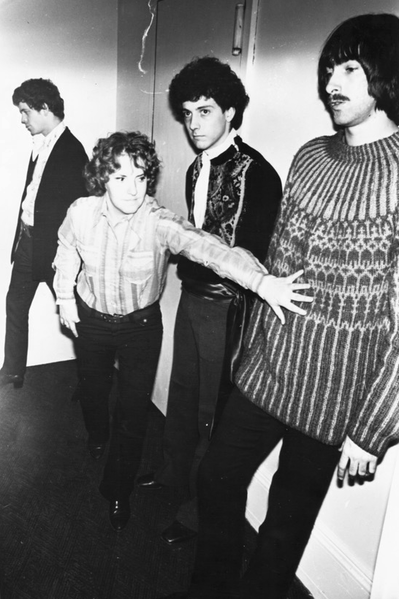 Image of the Velvet Underground taken by Billy Name image from Name, Billy, Public domain, via Wikimedia CommonsRarely found in used copies, the Index book came with a laid-in sheet of transparent paper over the warm water tear-off page.Image from a mint copy of The Index Book - acquired from Andy Warhol's estate and in the collection of vintagepop-upbooks.com Copy with Laid In transparent page from vintagepopupbooks.com Image of the Velvet Underground taken by Billy Name image from Name, Billy, Public domain, via Wikimedia CommonsRarely found in used copies, the Index book came with a laid-in sheet of transparent paper over the warm water tear-off page.Image from a mint copy of The Index Book - acquired from Andy Warhol's estate and in the collection of vintagepop-upbooks.com Copy with Laid In transparent page from vintagepopupbooks.com

About that Campbell's Soup can pop-up: The Campbell's Soup Can series, among Warhol's most renowned works, reflects his intrigue with consumer culture and mass production techniques. The choice of Campbell's Soup as his subject has an interesting backstory. Warhol once mentioned in interviews that for 20 years, he had a tin of Campbell’s Tomato soup every day for lunch, as it was all he could afford before his financial success. This personal anecdote has become an integral part of Warhol's legend. His Campbell's Soup pieces are emblematic of his artistic approach, encapsulating concepts that solidified his status as a Pop Art pioneer and continue to inspire artists even three decades after his passing. These works highlight Warhol's fascination with themes like consumerism, appropriation, replication, mass media, and the democratization of commercial culture. Image from the vintagepopupbooks collection https://www.vintagepopupbooks.com/Andy-Warhol-Index-Book-MINT-from-Warhol-estate-p/m-202b.htm
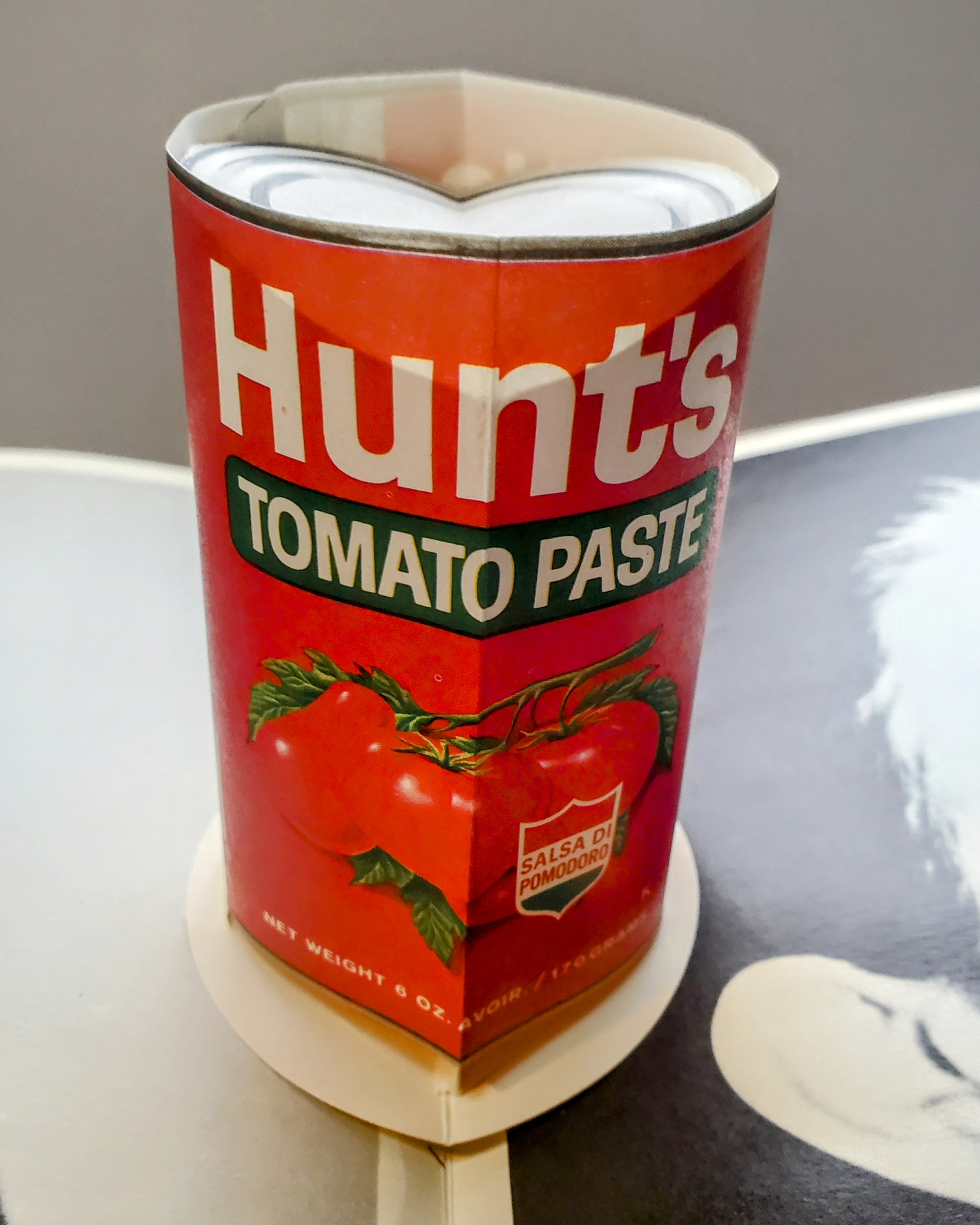 “a mod, gadget-packed item guaranteed to surprise and delight.”
(A Christmas ad in the New York Times, December 1967)
The Novelties that were included in this book: 1. Large Pop-up Castle. The pop-up castle in the Index Book was inspired by Warhol's childhood memories of building castles out of scrap wood in Pittsburgh. Warhol was also known for his love of whimsy and playfulness, as well as his interest in fairy tales and fantasy.
2. Red accordion which Warhol referred to in his ads as a "Bronx cheer maker"
3. Bi-plane pop-up
4. The Chelsea Girls paper disk on a wire spring. It featured reviews of Warhol’s film "Chelsea Girls" ( Chelsea Girls was a 1966 American experimental underground film directed by Andy Warhol and Paul Morrissey) among other interviews.
5. A fold-out dodecahedron depicting a hairy-chested Gerald Malanga. It was “spring loaded” with a rubber band & the whole thing was sealed between two pages with paper tabs holding the seal. When the pages were unsealed it was designed to pop out into a sphere.
6. A One-sided Lou Reed 7-inch 45 RPM flexi-disc record (with an image of Lou by Billy Name on the play side) The recording featured a conversation primarily between Christopher Cerf and Nico discussing the books layout and music by the Velvet Underground
7. A large fold-out Warhol photograph of a rainbow nose (supposedly Bob Dylan's) referred to in ads at the time as a do-it-yourself nose job
8. A Hunt's tomato can pop-up (Inspired by Warhol's most iconic works, the Campbell's Soup Cans. The Campbell's Soup Cans were a series of paintings that Warhol created in 1962, featuring 32 canvases, each one depicting a different flavor of Campbell's Soup.)
9. "FOR A BIG SURPRISE!!!" page with 8 moisture-sensitive tabs. These are sometimes called blotters or sponges – (Some say they symbolize acid use) The idea was for Warhol’s signature to disappear when they were immersed in warm water. Note that the book was issued with a transparent paper laid in over the page a "big surprise"
10. A Silver balloon with the word INDEX written on it
PLUS: 11. The holographic cover on the hardback editions - Which ads referred to as a 3-D Action Cover. The soft cover was done in highly reflective black-on-silver. Because Reynolds Wrap adorned various parts of the Factory, old ads for the book referred to it as “tinfoil-bound”.
Note: Some sources refer to a postcard and set of stickers that were supposedly included in the plastic bag with the book. Our sources say that this is true for another Andy Warhol book, " A Novel", but not for "Index Book". In fact, vintagepopupbooks.com has a mint copy still in the original plastic that came directly from Andy Warhol's estate. There are no postcards or stickers in the unused estate copy still in it's plastic bag.
A Warhol estate mint unread copy is available here:
https://www.vintagepopupbooks.com/Andy-Warhol-Index-Book-MINT-from-Warhol-estate
Other References not cited above and suggested reading: Columbia University Department of Art History Falculty paper "White Light/White Noise" by Branden W. Joseph. A Newspaper - The Village Voice Dec 21, 1967 "Andy Warhols Book Party, Put-on, Pop-out, Blow-up" "Andy Warhol: The Last Supper" exhibition catalogue, Gagosian Gallery, 2010
"The Andy Warhol Index Book" promotional materials, Random House, 1967 Andy Warhol, Publisher*. Hardcover. 2018. Author Lucy Mulroney University of Chicago Press. United States. Pages 57-67 *Note: Read this book to learn about the fascinating internal Random House memos depicting the ways this book came together. "The Philosophy of Andy Warhol (From A to B and Back Again)" by Andy Warhol, published by Harcourt Brace Jovanovich in 1975. In the book, Warhol writes about the design of the book and the various components included in the packaging. MyArtBroker. (n.d.). "Campbell’s Soup by Andy Warhol: Background & Meaning. |